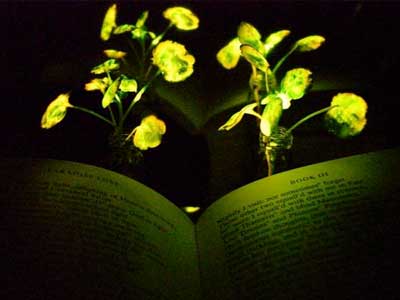| Posted: Dec 13, 2017 |
Bringing 'Avatar'-like glowing plants to the real world
(Nanowerk News) The 2009 film "Avatar" created a lush imaginary world, illuminated by magical, glowing plants. Now researchers are starting to bring this spellbinding vision to life to help reduce our dependence on artificial lighting.
|
|
They report in ACS' journal Nano Letters ("A Nanobionic Light-Emitting Plant") a way to infuse plants with the luminescence of fireflies.
|
 |
| Plants infused with the luminescence of fireflies could help reduce our dependence on conventional lighting. (Image: ACS)
|
|
Nature has produced many bioluminescent organisms, however, plants are not among them. Most attempts so far to create glowing greenery -- decorative tobacco plants in particular -- have relied on introducing the genes of luminescent bacteria or fireflies through genetic engineering. But getting all the right components to the right locations within the plants has been a challenge.
|
|
To gain better control over where light-generating ingredients end up, Michael S. Strano and colleagues recently created nanoparticles that travel to specific destinations within plants. Building on this work, the researchers wanted to take the next step and develop a nanobionic, glowing plant.
|
|
The team infused watercress and other plants with three different nanoparticles in a pressurized bath. The nanoparticles were loaded with light-emitting luciferin; luciferase, which modifies luciferin and makes it glow; and coenzyme A, which boosts luciferase activity. Using size and surface charge to control where the sets of nanoparticles could go within the plant tissues, the researchers could optimize how much light was emitted.
|
|
Their watercress was half as bright as a commercial 1 microwatt LED and 100,000 times brighter than genetically engineered tobacco plants. Also, the plant could be turned off by adding a compound that blocks luciferase from activating luciferin's glow.
|

